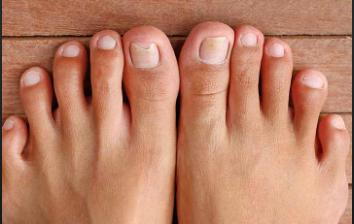Trephination, or drilling micro holes in nail plates to aid in treatment of toenail fungus
posted: Apr. 24, 2024.

Trephination of nail plates, the process of drilling holes or creating microconduits in them, has emerged as a promising treatment approach for fungal nail infections, also known as onychomycosis. This innovative method offers several potential benefits in effectively managing this common and often persistent condition. In this essay, we will explore the rationale behind trephination, its potential mechanisms of action, and its implications for the treatment of fungal nail infections.
Fungal nail infections represent a significant clinical challenge due to their chronic nature, resistance to traditional therapies, and the potential for recurrence. These infections, predominantly caused by dermatophytes but also by yeasts and non-dermatophyte molds, can lead to nail discoloration, thickening, brittleness, and discomfort, affecting both the physical appearance and the quality of life of affected individuals. Current treatment options, including topical and systemic antifungal medications, have limitations such as poor nail penetration, systemic side effects, and the risk of drug interactions. As a result, there is a growing need for alternative therapeutic strategies that can enhance drug delivery and improve treatment outcomes.
Trephination of nail plates offers a novel approach to addressing the challenges associated with conventional treatments for fungal nail infections. By creating small channels or perforations in the affected nails, trephination facilitates the penetration of antifungal agents into the nail bed, where the fungal infection resides. This enhanced drug delivery is particularly advantageous for topical antifungal formulations, which often struggle to penetrate the dense structure of the nail plate. By increasing drug bioavailability at the site of infection, trephination can improve the efficacy of antifungal treatment and accelerate the resolution of fungal nail infections.
The mechanisms underlying the therapeutic effects of trephination in the management of fungal nail infections are multifaceted. Firstly, the creation of microconduits in the nail plate disrupts the physical barrier that hinders drug penetration, allowing antifungal agents to reach deeper layers of the nail where fungal hyphae proliferate. This enhanced drug delivery directly targets the underlying cause of the infection, facilitating the eradication of fungal pathogens and preventing disease progression. Additionally, trephination may promote nail plate hydration, which can further improve drug permeation and efficacy. By increasing the moisture content of the nail, trephination softens the keratin structure, making it more permeable to antifungal agents and facilitating their diffusion into the nail bed.
Moreover, trephination creates a favorable environment for the application of adjunctive therapies, such as photodynamic therapy (PDT) or laser therapy. These modalities, which utilize light-based technologies to selectively target and destroy fungal cells, can be synergistically combined with trephination to enhance treatment outcomes. The microchannels created by trephination allow for improved light penetration into the nail plate, maximizing the therapeutic effects of PDT or laser therapy and increasing the likelihood of achieving complete fungal clearance.
In addition to its direct therapeutic benefits, trephination of nail plates offers practical advantages that contribute to its appeal as a treatment modality for fungal nail infections. Unlike systemic antifungal medications, which may cause systemic side effects or drug interactions, trephination is a minimally invasive procedure that is generally well-tolerated and associated with minimal discomfort. Furthermore, trephination can be easily performed in a clinical setting using specialized instruments, making it a cost-effective and accessible treatment option for patients with fungal nail infections.
In conclusion, trephination of nail plates represents a promising therapeutic strategy for the treatment of fungal nail infections. By enhancing drug delivery, promoting nail hydration, and facilitating the application of adjunctive therapies, trephination addresses key challenges associated with conventional treatment approaches and offers the potential for improved clinical outcomes. Further research is needed to validate its efficacy and safety, but trephination holds considerable promise as a valuable addition to the armamentarium of treatments for fungal nail infections.